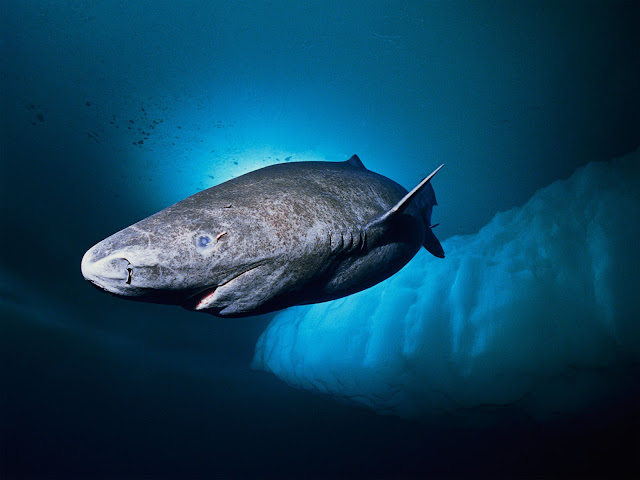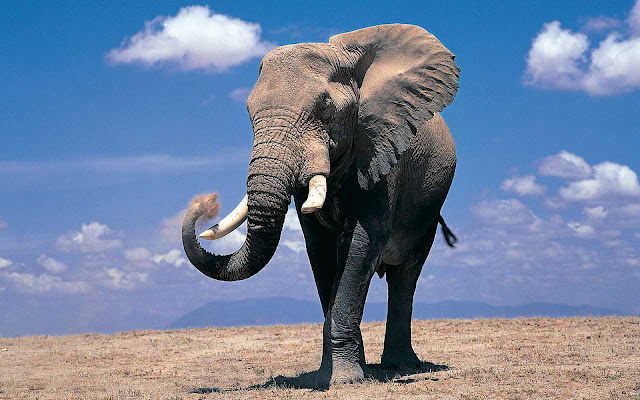Naturally,
all animals have to die. Most animals might die earlier than their actual
lifespan because of factors such as diseases, predators, bad weather, the
destruction of their habitats, infant mortality, and/or the destruction of
their food and shelter. The life expectancy in each organism is also dependent
on the species, given that some species are known to live longer than others.
It also depends on the location in which they live, given that
most aquatic organisms live longer than land-based animals. Although humans
tend to live beyond a hundred years, some animals may actually outlive humans. This time Shub”s Top Ten bring The Top Ten Longest
Living Animals on Earth.
1. Jellyfish
The
Turritopsis nutricula Jellyfish are known to regenerate through old age or
damage. They are, therefore, said to be ‘biologically immortal.’ They have
roamed the seas and oceans for more than 700 million years. Jellyfish, in
general, can live up to 20 years. They are free-swimming, use their jelly-like
bell to move, and use their tentacles to capture prey. Although some are
harmless to humans, some have deadly poisonous.
For instance,
the box jellyfish’s sting can cause a heart attack within five minutes. They are about
95% water and have no ears, mouth, brain, eyes, or heart. They also have no
bones or spine, meaning they are invertebrates. They are carnivorous and feed
on small fish, plankton, crustaceans and other jellyfish. They are located all
over the world.
2. The Ocean Quahog
Also
referred to as the Arctica Islandica, the ocean quahog has been recorded to
live for more than 400 years. They are hence said to be among the
longest-living marine organisms. One specimen, for instance, known as ‘Ming’
the clam, was estimated to have been 405 years old. However, the specimen in
the Icelandic seabed was actually 507 years old. The clam was named as so as it
was alive during the Ming Chinese Dynasty.
Also known as Háfrun, its age was calculated by counting the
annual growth lines in its shell. It was the oldest individual animal ever
discovered whose age was accurately determined. Its age was also confirmed by
the carbon-14 dating mechanism. Ming or Háfrun’s sex was never determined, and
it died in 2006 when British researchers opened its shell to examine it,
completely unaware of its age.
3. Greenland Shark
The
sharks are recorded to live for more than 200 years, although one was recorded
to be 400 years old. It is the longest living vertebrate on earth. They owe
their longevity in life as they grow very slowly. In fact, they grow about 1cm
every year and mature after they
are 100 years old. They reach sexual maturity after they are 150 years old.
They are mostly found in the North Atlantic Ocean as well the Arctic Ocean.
They can grow up to 7.3 meters in length and up to 1,400 kgs in weight. The
males are known to be slightly smaller than the females.
4. The Koi fish
The koi fish
are colored varieties of the Amur carp. They are distinguished by coloration,
scalation and patterning. Some are cream, with others being white, yellow, red,
blue, black, orange and others are red. Some varieties are known to live longer
than others. The average koi in the Japanese waters can live up to be 70 years
old. ‘Hanako’ a koi carp in Japan, lived to be 225 and died in 1977. If they
live in artificial ponds, they can live to be over 40 years of age.
5. Bowhead Whale
The
Bowhead whale is estimated to have an average lifespan of 200 years. One caught
off the coast of Alaska in 2007 had a harpoon point on it, which dated back to
1880, making it at least 130 years of age at the time. They are the
fifth-largest marine mammals and
are native to the cold and harsh Arctic and the sub-Arctic seas.
They communicate with each other through their complex but
famous songs. They can grow up to 18m and weigh about 100 tonnes. Despite their
length and weight, they can leap entirely out of water.
6. The Galapagos Giant Tortoise
They are the largest living species of tortoises and can live
beyond 100 years. The oldest was clocked at 152 years. They have a low
metabolism with some like the Galapagos tortoises, known to go for over a year
without either water or food. Additionally, they can sleep for about 16 hours a
day. ‘Lonesome George’, for instance, lived beyond 100 and was still classified
as a young adult. They inhabit every continent except Antarctica.
A report in 2020 briefed that ‘Diego’, a giant tortoise which
was shipped to Espanola, Ecuador, in the 1960s, helped his species from going
extinct. He fathered 40% of the giant tortoises on the island. With 14 giant
tortoises in the 1960s, the animal is retiring to Galapagos, Ecuador, having
bread over 2000 children. He is over 100 years old as well.
7. The Elephant
It is the largest land animal and can live up to 70 years of
age. Today, there exists the African and the Asian species of the elephant
only. The African is the largest with huge ears while the Asian counterpart has
slightly smaller ears. Asian elephant females also do not grow tusks. They are
highly smart and social creatures.
In fact, their brains weigh over 5kgs. They also have the most
prolonged pregnancies at 22 months with new calves being born at 90kgs and
about 3 feet tall. A famous Asian elephant, Lin Wang, at the Taipei Zoo, lived
to be 86.
8. The Macaw
Their breeding age is between 30 and 35 years. Sadly, the macaws are threatened and endangered. There are a few species that are already extinct because of the illegal pet trade, climate change, and the degradation of their habitat.
9. The Longfin Eel
It is native
to New Zealand and Australia, and they can live up to be 60 years old. The
oldest living longfin eel was recorded to be 106 years of age. Just like the
Greenland shark, the longfin eel owes its long life to the fact that they grow
very slowly. The longfin eels are a traditional food source for the Maori
people of New Zealand, meaning they are increasingly threatened.
10. Geoduck
The Pacific
geoduck is a giant and edible saltwater clam, native to western Canada and
northwest the United States. Also referred to as the mud ducks or the king
clams, they are some of the oldest living animals in the world. A typical
geoduck’s lifespan is 140 years, and the oldest geoduck clam died at 168 years
of age. They are between 15cm and 20cm in length and can weigh up to 10 pounds.
Images Source : Google.










Comments
Post a Comment
If you have any doubts, Please let me know